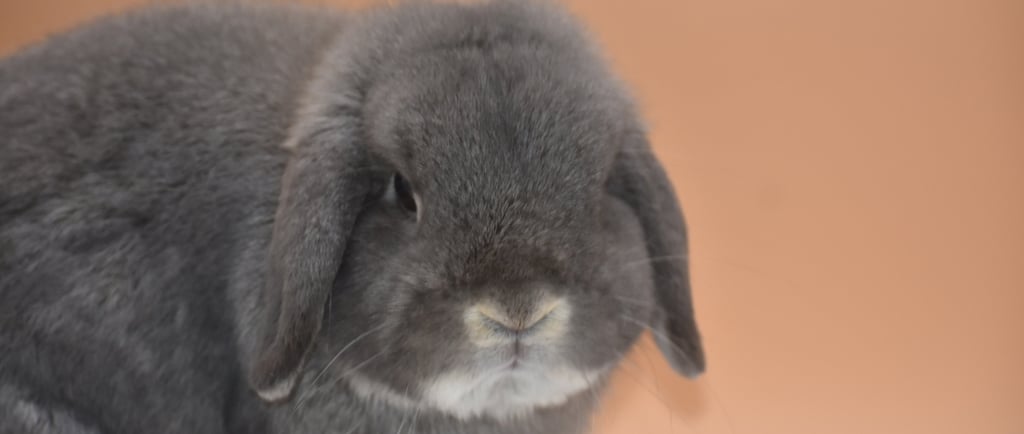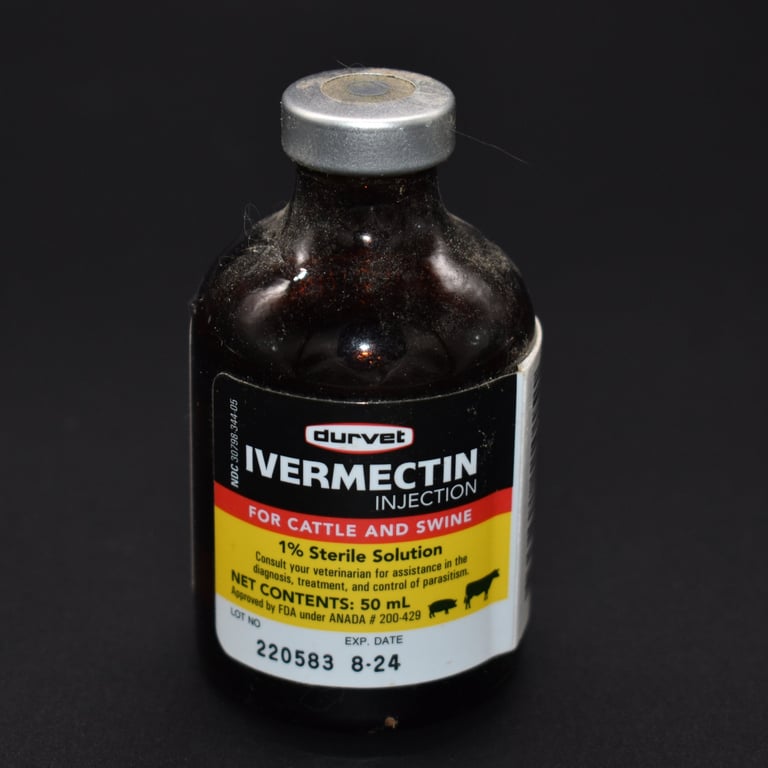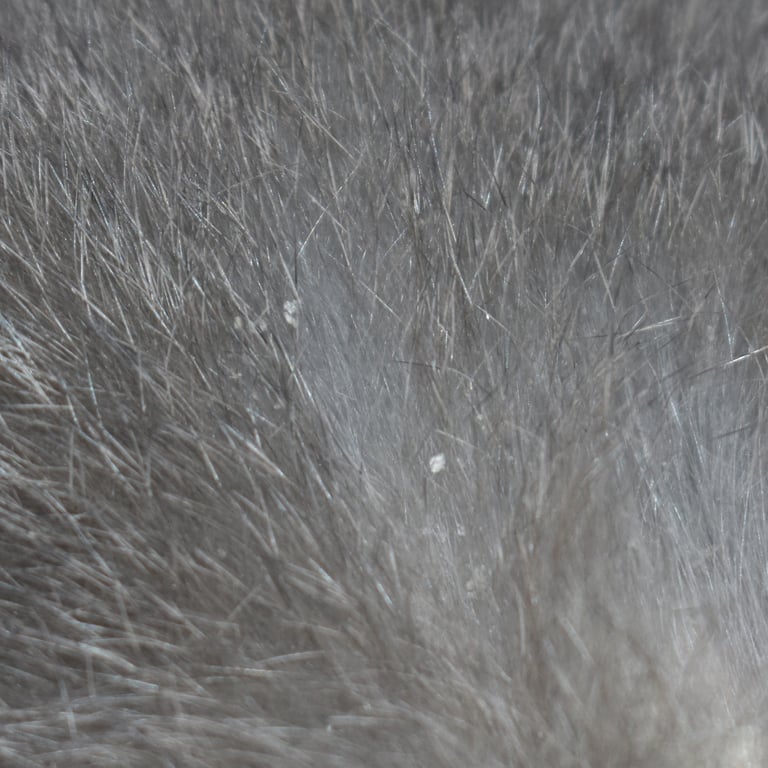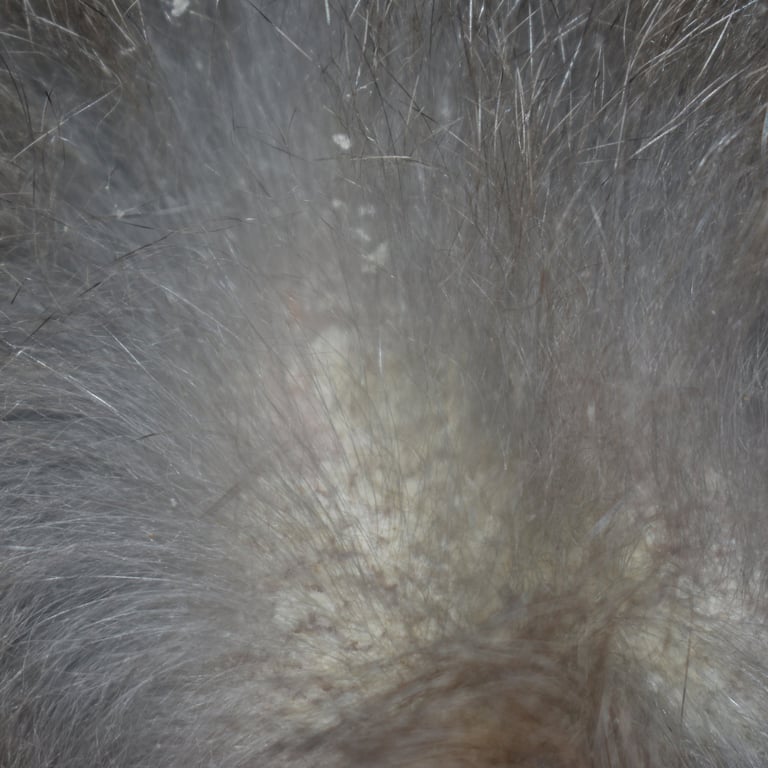Diagnosing and Treating Fur Mites
Those tiny white flakes in your rabbit's fur could be more than a case of dry skin...
Amy J.
8/6/20255 min read


When it comes to caring for the Hot Cross Buns, few things make my heart sink faster than seeing a few flakes of what looks like dandruff on a Bun's back, usually at the nape of the neck. It's tempting to think the rabbit just has a patch of dry skin, but I know it's actually time to put our fur mite treatment plan into action.
What are rabbit fur mites? Cheyletiella parasitovorax or ‘walking dandruff’ are tiny, spider-like parasites that feast upon dead skin cells and other goodies found in the fur. Pretty gross, right? But wait, there's more! Fur mites are zoonotic, which means humans and other animals can share in the fun, too.
What are the symptoms of fur mites? Usually the first sign is the tell-tale bits of white flakes on the back of the neck and progressing down the spine. Some rabbits scratch more than normal, others don't seem to notice them until it gets really bad. Your rabbit can have hair loss in affected areas, or even develop scaly lesions when a particularly bad infestation has developed.
How do rabbits "catch' fur mites? Typically, a rabbit picks up fur mites from a contaminated source and grows his/her own special group of parasitic friends as a result. In our most recent case, we discovered our rabbits Gumption and Missy both developed noticeable "flakes" about two weeks following their spay/neuter procedures. Within that time, due to proximity, Sweet Tea, Rosie, and Henrietta also got them. Because we didn't treat them for mites immediately upon returning home from the vet, we unwittingly "shared" them by photographing other rabbits using the same mat and backdrop, wearing the same clothes while handling them, and even by petting them, one after the other. It's incredibly easy to spread them from one rabbit to another before realizing there's a problem. Mites can also be picked up from hay, letting the rabbit play in the grass, or from contact with other pets and animals. There's a greater possibility of a pet rabbit developing fur mites at some point in his/her life than one would think, no matter how careful we try to be.
How are mites diagnosed? The first time a bunny parent notices tiny white flakes and scaly patches of missing fur, most rabbits are taken to the vet, where scrapings will be taken and looked at under a microscope. If mites and/or eggs are visible, the diagnosis is made. Since we've been through this three or four times over the past nine years, we have learned to recognize the signs and are able to begin treatment right away.
How are fur mites treated? When being treated by a vet, Revolution is typically used as a topical application at the base of the rabbit's neck to kill the mites. This treatment will need to be applied twice more at 10-14 day intervals, as prescribed by the veterinarian. (Please note: the veterinarian MUST be the one to prescribe the medication in the right dosage for your rabbit's size, weight, and age. Using the incorrect medication can cause serious health issues and could even result in death. PLEASE do not use leftover flea and tick medication from your dog or cat on your rabbit. Some of these medications are fatal to rabbits.)
Since this is not our first fur mite rodeo and we have consulted our vet who understands that bringing 20+ rabbits to the vet for diagnosis and treatment is cost prohibitive and very stressful for the rabbits, he gave us another option that is safe for healthy adult rabbits. We purchase a small bottle of Ivomec (Ivermectin) injection from the feed store for approximately $46 and a fine-gauge needle and small syringe to dose them. (Don't worry! We don't actually have to inject them) We draw up some of the Ivermectin into the syringe and drop 5-6 drops on the nape of the rabbit's neck. This is the best place to drop it because the rabbit won't be able to groom it off. The medication is absorbed into the skin and then sets off to kill the fur mites. We repeat this will all of the rabbits in our herd (if we have baby rabbits, we begin treating with one drop if four weeks of age, two drops of six weeks of age, and three drops of eight weeks of age.) We repeat the dose a second time 10 days later, and a third (and hopefully, final!) time 10 days after that.
About four days after the first dose of Ivermectin, we apply our second line of defense, which is a very light dusting of diatomaceous earth (we use food grade, purchased on Amazon) to the rabbit's back and neck area. We brush it into the coat a bit, to make certain it's in contact with the skin, where it can help kill the parasites. By a light dusting, we mean no more than 1/2-1 teaspoon per rabbit, being kept well away from the face and eyes, as it can irritate the eyes and nose. My daughter Evelyn covers the bunny's eyes and I do the quick dusting and brushing. It's over very quickly and should never involve raising clouds of diatomaceous earth dust.
After the first dose of Ivermectin, every area of the pen, cage space, and house where the bunny plays needs to be kept scrupulously clean. All bedding should be washed on hot and dried at as high of a setting as the fabric can handle to kill the mites and eggs. Surfaces should be cleaned and steamed, if possible. If not, we add a small bit of diatomaceous earth (DE) to anything that can't be cleaned by normal means, to kill any hidden mites or eggs. Be sure to clean all grooming tools, as well!
Our current fur-mite avoidance protocol is this:
Wash hands before and after touching each rabbit
Change clothes frequently when working with or cleaning the rabbit cage spaces, so as to not cross-contaminate rabbits and bedding
Quarantine all rabbits coming back from any vet trips (or anywhere) and treat for fur mites to avoid infestation
Groom rabbits regularly and check for any sign of fur mites on at least a weekly basis (it's typically every three days with our routine)
Clean and disinfect all grooming tools between uses.
Wash and dry all bedding on high when changed out.
If all rabbits suddenly develop mites at roughly the same time, are we using hay from a new source? If so, discontinue use.
Give all potential breeding pairs a close examination before allowing them to be in a pen together
The following images are of a bottle of Ivermectin (complete with dust, as it's an old bottle I grabbed and forgot to dust off before photographing), a close-up of white "dandruff" that are actually fur mites, and finally, and a close-up of a rabbit (Sweet Tea) with a bad case of fur mites that got out of hand very quickly. You can see the scaly skin covered in mites. He is now fully recovered, and all of the Buns are doing well and seem to be mite-free.



